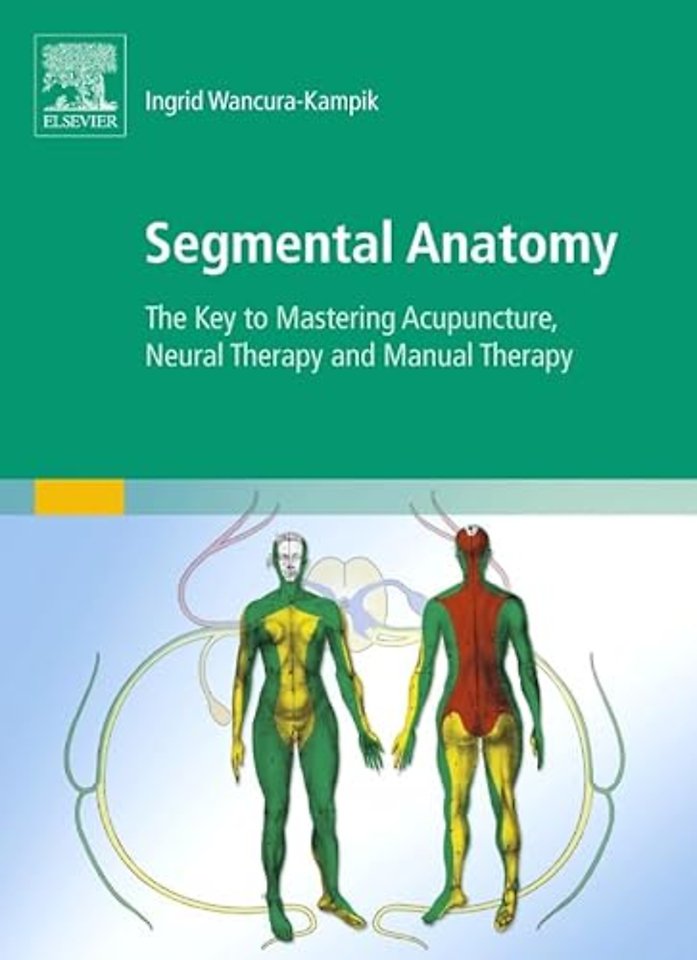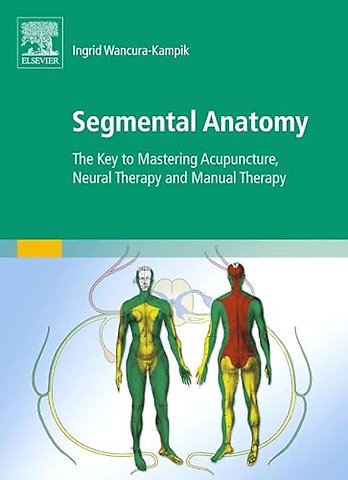<p>1</p> <p>Segmentation and Metamerism 1<br>What is a Segment? 1<br>The Significance of Segments 7</p> <p>2</p> <p>The Role of the Peripheral Spinal Nervous System in Segmentation 1<br>The Spinal Nerves 4<br>The Branches of the Spinal Nerves 15<br>The Three Spinal Nerve Branches As the Basis of the Threefold Longitudinal Division of the Body Surface 18<br>The Branches of the Spinal Nerves in Detail 32<br>The Dorsal Branches of the Spinal Nerves 32<br>The Dorsal Branches in Psychosomatic Medicine and Evolution 37<br>The Ventral and Lateral Spinal Nerve Branches and Plexuses 41<br>Plexus Formation from the Point of View of Segmental Anatomy 42<br>The Individual Plexuses 47<br>The Pre- and Postaxial Lines, Basis of the Meridian-„Lines“ 70</p> <p>3</p> <p>The Role of the Peripheral Autonomic Nervous System in Segmental Theory 1<br>Anatomy 2<br>The Peripheral Sympathetic Nervous System and Its Role in Segmental Theory 4<br>The Origins of the Sympathetic Nervous System 5<br>Sympathetic Innervation of the Limbs 6<br>Sympathetic Effects on the Dilator Pupillae Muscle and on the Effector Organs of the Integument 7<br>Sympathetic Supply to the Head, Neck, and Limbs 10<br>The Efferent Sympathetic Nerves 12<br>The Afferent Sympathetic Nerve Pathways 33<br>The Large Sympathetic Ganglia and Their Projections onto the Skin 38<br>The Peripheral Parasympathetic Nervous System and Its Role in Segmental Theory 46</p> <p>4</p> <p>The Dermatomes 1<br>Radicular Innervation of the Integument 1<br>Clinical Relevance 2<br>Parts of a Dermatome 4<br>The Sensory and Autonomic-Motoric Dermatomes 6<br>Sensory Dermatomes 6<br>Autonomic-Motoric Dermatomes 8<br>Physiological Hyperesthesia 9<br>The Maximum Points of the Dermatomes 9<br>The Maximum Areas of the Dermatomes 13<br>The Hiatus Lines 14<br>Individual Dermatome Groups, Extent and Shape, Interactions, and „Autonomic Facial Expression“ 17<br>Dermatomes of the Head and Neck 17<br>Dermatomes of the Trunk T1 to T12 25<br>The Lumbar and Sacral Dermatomes 29<br>Dermatoses and Segmentation 30</p> <p>5</p> <p>The Myotomes 1<br>Radicular Innervation of the Muscles 1<br>Metameric Order of the Myotomes 2<br>Herringham’s Rules of Location and Distribution of Myotomes in the Muscles 3<br>The Muscles of the Upper and Lower Limbs and Their Corresponding Myotomes 6<br>The Individual Myotome Groups 7<br>The Cervical Myotomes 7<br>The Thoracic Myotomes (T 1 to T 12) 24<br>The Lumbo-Sacral Myotomes 34</p> <p>6</p> <p>The Sclerotomes 1<br>Radicular Innervation of the Bones 1<br>The Spinal Column and Its Segmental Relations 4<br>The Individual Sclerotomes 6<br>The Sclerotomes of the Upper Limb and the Shoulder Girdle 6<br>The Sclerotomes of the Lower Limb and the Pelvis 8</p> <p>7</p> <p>The Enterotomes 1<br>„Transformation“ of Internal Organs into Enterotomes 4</p> <p>8</p> <p>Conduction of Impulses Betweeen Segments* 1<br>Multisynaptic, Proprioceptive, and Viscerogenic Reflexes 1</p> <p>9</p> <p>Referred Pain 1<br>Pain Projected to the Body Surface in Visceral Disease 1<br>Projected Symptoms 4<br>On the Location of Projected Symptoms 9<br>Clinical Significance of Projected Symptoms 9<br>Algetic Symptoms 10<br>Hyperalgesia and Hyperesthesia of the Cutis and Subcutis (Head Zones) 12<br>Hyperalgia of Muscles and Tendons (Mackenzie Zones) 14<br>Comparison of Pseudoradicular Syndromes, e.g., Radiation of Pain from a Joint Capsule (Fig. 9.4) and Referred Pain (Fig. 9.3) 18<br>Autonomic-Reflexive Symptoms 21<br>Autonomic Effects in the Integument 22<br>Effects on the Head 27<br>Effects in the Shoulder 35<br>Asymmetry of Posture and Movement 36<br>Reflexive and Algetic Spinal Column Syndromes 37<br>Asymmetry of Proprioceptive and Multisynaptic Reflexes 38<br>Autonomic Organ Reflexes (Viscero-Visceral-Reflexes) 40</p> <p>10</p> <p>The Visceral Organs—the Enterotomes from the Viewpoint of Segmental Anatomy 1<br>Interactions and Projectional Phenomena 1<br>The Heart: Algetic and Autonomic-Reflexive Areas of Projection 2<br>Lungs and Bronchi: Their Algetic and Autonomic-Reflexive Projectional Fields 14<br>The Esophagus: Algetic and Autonomic-Reflexive Projectional Fields 21<br>Stomach and Duodenum 26<br>Small Intestine (Jejunum, Ileum) 32<br>Cecum, Appendix, Ascending and Transverse Colon 34<br>Descending Colon, Sigmoid Colon, and Rectum 37<br>Kidney, Bladder, Ureter—Their Algetic and Autonomic-Reflexive Projectional Fields 41<br>The Genital Tract: Its Algetic and Autonomic-Reflexive Projectional Fields 47<br>Testes, Uterus, Ovaries: Their Algetic and Autonomic-Reflexive Projectional Fields 50<br>Prostate Gland: Its Algetic and Autonomic- Reflexive Projectional Fields 51<br>Liver and Gallbladder: Algetic and Autonomic-Reflexive Projectional Fields 53<br>Pancreas and Spleen: Their Algetic and Autonomic-Reflexive Projectional Fields 57<br>Occurrence of Reflexive and Algetic Symptoms in Other Disorders 58<br></p> <p><br><br> </p>

